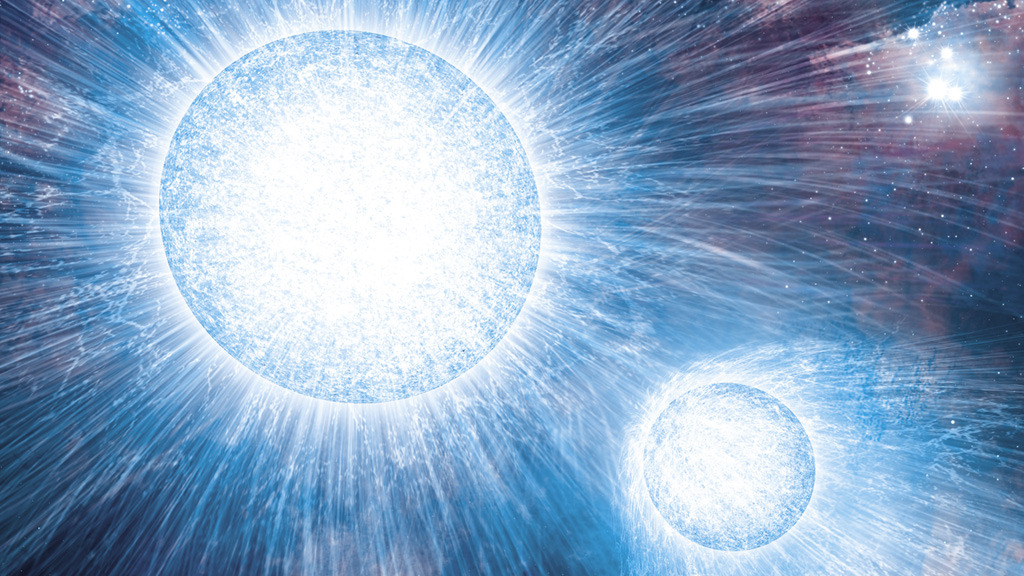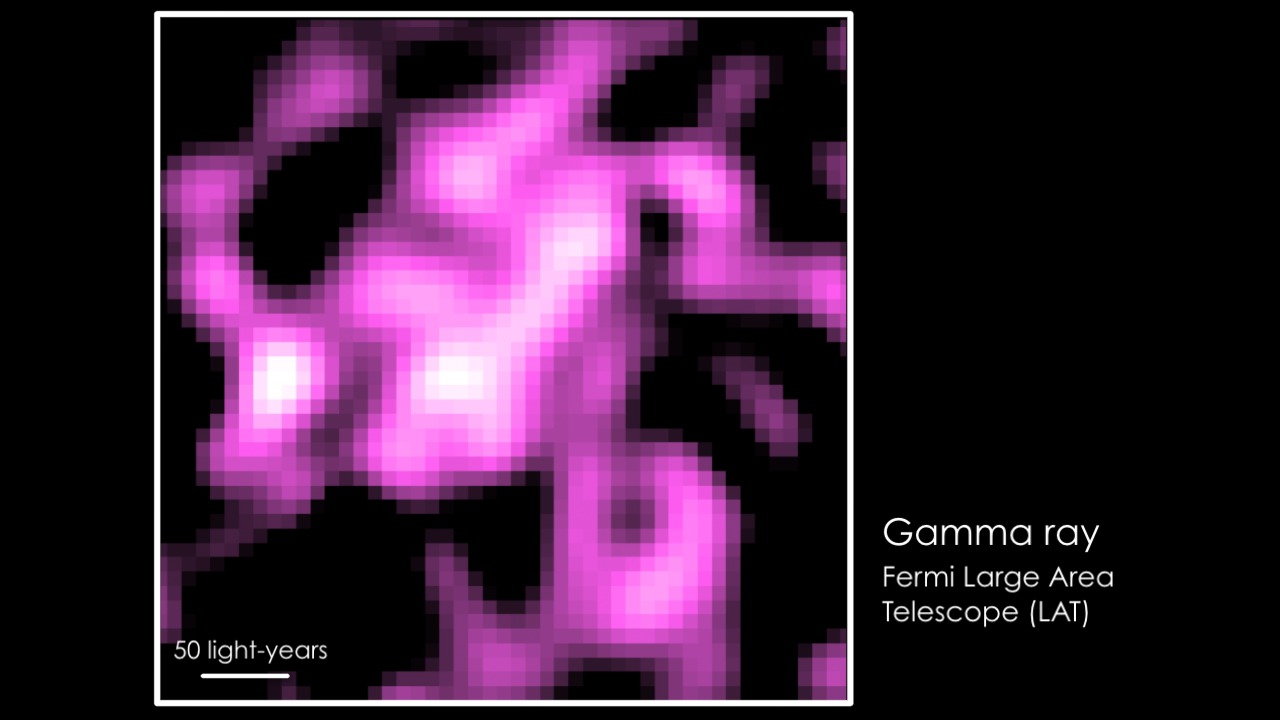X-ray Satellites Monitor the Clashing Winds of a Colossal Binary
One of the nearest and richest OB associations in our galaxy is Cygnus OB2, which is located about 4,700 light-years away and hosts some 3,000 hot stars, including about 100 in the O class. Weighing in at more than a dozen times the sun's mass and sporting surface temperatures five to ten times hotter, these ginormous blue-white stars blast their surroundings with intense ultraviolet light and powerful outflows called stellar winds.
Two of these stars can be found in the intriguing binary system known as Cygnus OB2 #9. In 2011, NASA's Swift satellite, the European Space Agency's XMM-Newton observatory and several ground-based facilities took part in a campaign to monitor the system as the giant stars raced toward their closest approach. The observations are giving astronomers a more detailed picture of the stars, their orbits and the interaction of their stellar winds.
An O-type star is so luminous that the pressure of its starlight actually drives material from its surface, creating particle outflows with speeds of several million miles an hour. Put two of these humongous stars in the same system and their winds can collide during all or part of the orbit, creating both radio emission and X-rays.
In 2008, research showed that Cygnus OB2 #9 emitted radio signals that varied every 2.355 years. In parallel, Yael Naz
Short narrated video.
This computer simulation shows the gas density around a colliding wind binary named WR 22. The star locations are marked by yellow dots, and decreasing gas density is indicated by the sequence of red, white and blue colors. In this simulation, a 26-solar-mass O-type star orbits the hotter and more massive (72 suns) Wolf-Rayet star WR 22. Because WR 22 possesses the stronger stellar wind, a bow shock and wake is formed by the O star as it orbits. The stellar orbits are eccentric, so the separation contracts and expands. Consequently, the conditions in the shocked gas around the O star changes; as the stars near closest approach, the gas cools so effectively that it becomes very clumpy. During closest approach, WR 22's stellar wind is so intense that the region where the winds collide is actually forced back onto the O star. Such a collapse of the wind region does not occur with Cygnus OB2 #9, which makes it a well-behaved system for exploring wind-wind interactions. Simulations like this are being applied to Cygnus OB2 #9 in support of the recent observational campaign to help unravel the properties of its wind-wind collision.
Credit: Australian National Univ./E. R. Parkin and Univ. of Li
Dissolve sequence of seven Swift and XMM-Newton images of Cygnus OB2 #9. This group also includes the first still: Swift image from February 10, 2011.
Credit: NASA/GSFC/S. Immler

Swift X-ray image of Cyg OB2 #9 from April 4, 2011.
Credit: NASA/GSFC/S. Immler

Swift X-ray image of Cyg OB2 #9 from May 18, 2011.
Credit: NASA/GSFC/S. Immler

XMM-Newton X-ray image of Cyg OB2 #9 from June 25, 2011.
Credit: NASA/GSFC/S. Immler

Swift X-ray image of Cyg OB2 #9 from July 1, 2011.
Credit: NASA/GSFC/S. Immler

Swift X-ray image of Cyg OB2 #9 from October 7, 2011.
Credit: NASA/GSFC/S. Immler

XMM-Newton X-ray image of Cyg OB2 #9 from April 29, 2007.
Credit: NASA/GSFC/S. Immler

Data from the EPIC instrument aboard the European Space Agency's XMM-Newton satellite were used to construct this image of the core of Cygnus OB2, an OB association located 4,700 light-years away. The cluster's massive O-type stars produce the strongest X-ray emission, which appear as bright sources against a background of weaker emission from hundreds of lower-mass young stars. The star nearest the center is Cygnus OB2 #8A, and the bright star directly below it is Cygnus OB2 #9. The colors correspond to different X-ray energies: blue, 0.5 to 1.0 keV; green, 1.0 to 2.0 keV; and red, 2.0 to 8.0 keV. The field of view is 40 arcminutes across.
Credit: ESA/Gregor Rauw, Univ. of Li

Artist's rendering of a colliding wind binary.
Credit: NASA/C. Reed
For More Information
Credits
Please give credit for this item to:
NASA/Goddard Space Flight Center. However, individual images should be credited as indicated above.
-
Animator
- Scott Wiessinger (USRA)
-
Video editor
- Scott Wiessinger (USRA)
-
Narrator
- Scott Wiessinger (USRA)
-
Producer
- Scott Wiessinger (USRA)
-
Scientist
- Stefan Immler (UMCP)
-
Writers
- Francis Reddy (Syneren Technologies)
- Scott Wiessinger (USRA)
Missions
This page is related to the following missions:Series
This page can be found in the following series:Tapes
The media on this page originally appeared on the following tapes:-
Colliding Winds-Cyg OB2
(ID: 2012102)
Wednesday, October 10, 2012 at 4:00AM
Produced by - Robert Crippen (NASA)
Related papers
Datasets used
-
[Swift]
ID: 217
Note: While we identify the data sets used on this page, we do not store any further details, nor the data sets themselves on our site.
Release date
This page was originally published on Friday, October 12, 2012.
This page was last updated on Wednesday, May 3, 2023 at 1:52 PM EDT.

